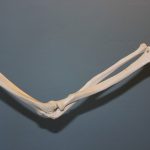Are you tired of the agonizing hip pain that hinders your daily activities? Look no further! In this article, we provide you with essential tips and strategies for quick relief and long-term recovery.
Imagine being able to move freely without discomfort, reclaiming your active lifestyle. We will guide you through the causes, symptoms, and remedies for hip pain.
Get ready to take control of your hip health and say goodbye to pain!
Key Takeaways
 Understanding the causes and symptoms of hip pain, such as arthritis, bursitis, muscle strains, poor posture, and limited range of motion.
Understanding the causes and symptoms of hip pain, such as arthritis, bursitis, muscle strains, poor posture, and limited range of motion.- Common treatments for hip pain, including rest and activity modification, physical therapy, medications, injections, and holistic treatments.
- When to seek medical attention for hip pain, such as sudden and intense pain, persistent pain, difficulty walking, and signs of infection.
- Immediate remedies for hip pain relief, such as applying ice, taking over-the-counter pain medications, resting and elevating the leg, trying gentle stretches and exercises, and making lifestyle changes.
Understanding the Causes of Hip Pain
If you’re experiencing hip pain, understanding the causes can help you find relief and prevent further injury. Hip pain can be caused by a variety of factors, including injury, overuse, and medical conditions. One common cause of hip pain is arthritis, which is the inflammation of the joints. Arthritis can cause the cartilage in the hip joint to wear down, leading to pain and stiffness.
Another cause of hip pain is bursitis, which is the inflammation of the bursa sacs that cushion the hip joint. Bursitis can be caused by repetitive movements or injury. Muscle strains or tears can also cause hip pain. These injuries can occur from sudden movements, overexertion, or accidents. Poor posture and biomechanics can put strain on the hip joint, leading to pain and discomfort.
In some cases, hip pain may be a symptom of a more serious medical condition, such as a fracture or infection. To prevent hip pain, it’s important to maintain a healthy weight, exercise regularly, and practice good posture. Avoiding repetitive movements and using proper techniques when lifting heavy objects can also help prevent hip pain.
Additionally, incorporating holistic treatments such as acupuncture, chiropractic care, and physical therapy can provide relief and promote long-term recovery. If you’re experiencing hip pain, it’s recommended to consult with a healthcare professional for an accurate diagnosis and personalized treatment plan.
Identifying Common Symptoms of Hip Pain
When experiencing hip pain, it’s important to be aware of common symptoms such as discomfort, limited range of motion, and difficulty walking. These signs can help in the diagnosis of hip pain and guide healthcare professionals in determining the appropriate treatment.
Here are some common symptoms to look out for:
-
Discomfort: Hip pain can manifest as a dull ache or sharp pain in the hip joint or groin area. It may worsen with movement or activities that involve weight-bearing on the affected hip.
-
Limited range of motion: Hip pain can lead to stiffness and restricted movement in the hip joint. You may find it challenging to perform activities that require you to bend, rotate, or extend your hip.
-
Difficulty walking: Hip pain can make it difficult to walk or bear weight on the affected side. You may experience a limp or have to rely on aids such as crutches or a cane to alleviate the pain.
-
Radiating pain: In some cases, hip pain may radiate to other areas such as the buttocks, thigh, or knee. This can indicate underlying conditions such as sciatica or referred pain from the hip joint.
If you experience any of these symptoms, it’s crucial to seek medical attention for a proper diagnosis. A healthcare professional will conduct a thorough evaluation, which may include physical examination, imaging tests like X-rays or MRI scans, and possibly blood tests to identify the cause of your hip pain.
Common treatments for hip pain may include:
-
Rest and activity modification: Reducing activities that aggravate the pain and allowing time for the hip joint to heal.
-
Physical therapy: Exercises and stretches to improve hip strength, flexibility, and range of motion.
-
Medications: Nonsteroidal anti-inflammatory drugs (NSAIDs) or pain relievers can help alleviate pain and reduce inflammation.
-
Injections: Corticosteroid injections into the hip joint can provide temporary pain relief.
When to Seek Medical Attention for Hip Pain
If you’re experiencing severe hip pain that’s interfering with your daily activities, it’s important to seek medical attention as soon as possible. While some hip pain can be managed with self-care and home remedies, there are certain signs of serious hip pain that shouldn’t be ignored. It’s crucial to know when to seek medical attention for hip pain to ensure proper diagnosis and treatment.
One of the signs that you should seek medical attention for hip pain is if the pain is sudden and intense, especially if it’s accompanied by a popping or snapping sound. This could indicate a hip joint dislocation or fracture, which requires immediate medical attention to prevent further damage.
Another sign is if the pain is persistent and doesn’t improve with rest, ice, or over-the-counter pain medications. Chronic hip pain that lasts for more than a few weeks may be a sign of an underlying condition such as arthritis, bursitis, or tendinitis. These conditions often require medical intervention for proper management and relief.
Additionally, if you experience difficulty walking or bearing weight on the affected hip, it’s important to seek medical attention. This could be a sign of a more serious injury or condition that needs to be addressed by a healthcare professional.
Other signs that warrant medical attention include swelling, redness, or warmth around the hip joint, as well as fever and chills, which may indicate an infection.
Immediate Remedies for Hip Pain Relief
To find quick relief for your hip pain, try implementing these immediate remedies:
-
Apply ice: Ice can help reduce inflammation and numb the area, providing temporary relief from hip pain. Wrap an ice pack in a towel and apply it to the affected area for 15-20 minutes several times a day.
-
Take over-the-counter pain medications: Nonsteroidal anti-inflammatory drugs (NSAIDs), such as ibuprofen or naproxen, can help alleviate pain and reduce inflammation in your hip. Follow the recommended dosage instructions and consult with your doctor if you have any concerns.
-
Rest and elevate: Give your hip a break by avoiding activities that aggravate the pain. Resting and elevating your leg can help reduce swelling and provide relief. Use pillows or cushions to elevate your leg while lying down.
-
Try gentle stretches and exercises: Certain stretches and exercises can help strengthen the muscles around your hip and improve flexibility, providing relief from pain. Consult with a physical therapist or healthcare professional to learn proper techniques and exercises that are suitable for your specific condition.
In addition to these immediate remedies, making certain lifestyle changes can also contribute to long-term relief from hip pain. Maintaining a healthy weight can reduce stress on your hip joint, while regular exercise can help improve joint function and reduce pain. Avoiding high-impact activities and practicing good posture can also help prevent or alleviate hip pain. Remember to consult with your healthcare provider before making any significant changes to your lifestyle or starting a new exercise routine.
The Importance of Rest and Recovery for Hip Pain
Take breaks and prioritize rest and recovery to effectively manage your hip pain. When experiencing hip pain, it’s crucial to allow your body time to heal and rejuvenate. Rest and recovery play a vital role in relieving hip pain and promoting long-term healing. By incorporating rest and recovery into your routine, you can enhance your body’s ability to heal and reduce the risk of further injury.
One of the most important aspects of rest and recovery is giving your hip joint a break from excessive stress and strain. This means avoiding activities that aggravate your hip pain and taking regular breaks throughout the day. It’s also beneficial to elevate your legs and apply ice or heat to reduce inflammation and provide relief.
In addition to rest, gentle stretching and low-impact exercises can help improve hip mobility and reduce pain. However, it’s crucial to consult with a healthcare professional or physical therapist before starting any exercise regimen to ensure you’re performing the right exercises for your specific condition.
Another key component of rest and recovery is getting enough sleep. Sleep is essential for the body’s natural healing processes, and a lack of quality sleep can hinder your recovery from hip pain. Establish a consistent sleep schedule and create a comfortable sleep environment to promote restful sleep.
Furthermore, incorporating stress management techniques such as deep breathing exercises, meditation, or yoga can help reduce muscle tension and promote overall relaxation. Stress can exacerbate hip pain, so finding healthy ways to manage stress is crucial for your recovery.
Effective Exercises for Strengthening the Hips
To effectively strengthen your hips, incorporate a variety of exercises and remember to listen to your body’s limits. Strengthening the hips can help prevent hip pain and improve hip pain management.
Here are some effective exercises that you can include in your routine:
-
Hip Bridges: Lie on your back with your knees bent and feet flat on the floor. Lift your hips off the ground, squeezing your glutes and engaging your core. Hold for a few seconds, then lower your hips back down. Repeat for 10-15 repetitions.
-
Clamshells: Lie on your side with your knees bent and feet together. Keeping your feet touching, lift the top knee as high as you can without moving your pelvis. Lower your knee back down and repeat for 10-15 repetitions on each side.
-
Side Lunges: Stand with your feet hip-width apart. Take a step to the side with your right foot, bending your right knee and pushing your hips back. Keep your left leg straight. Push off your right foot and return to the starting position. Repeat on the other side for 10-12 repetitions.
-
Hip Abduction: Stand with your feet hip-width apart and place a resistance band around your ankles. Lift one leg out to the side, keeping your knee straight. Slowly lower your leg back down and repeat on the other side. Aim for 10-12 repetitions on each side.
Remember to start with light weights or resistance bands and gradually increase as your strength improves. If you experience any pain or discomfort during these exercises, stop and consult with a healthcare professional.
Stretching Techniques to Alleviate Hip Pain
For quick and effective relief, try incorporating regular stretching exercises into your routine to alleviate hip pain. Stretching can help to improve flexibility and reduce muscle tension, which can contribute to hip pain. Here are some effective hip pain exercises and stretches that you can try:
Hip Flexor Stretch:
- Start by kneeling on one knee, with your other leg in front of you at a 90-degree angle.
- Keep your back straight and gently push your hips forward until you feel a stretch in the front of your hip.
- Hold for 30 seconds and repeat on the other side.
Piriformis Stretch:
- Lie on your back with your knees bent.
- Cross one ankle over the opposite knee and gently pull your knee towards your chest until you feel a stretch in your buttocks.
- Hold for 30 seconds and repeat on the other side.
IT Band Stretch:
- Stand with your feet hip-width apart and cross one leg behind the other.
- Lean towards the side of the crossed leg until you feel a stretch along the side of your hip and thigh.
- Hold for 30 seconds and repeat on the other side.
Hamstring Stretch:
- Sit on the edge of a chair with one leg extended in front of you.
- Keeping your back straight, lean forward from your hips until you feel a stretch in the back of your thigh.
- Hold for 30 seconds and repeat on the other side.
Remember to always warm up before stretching and to listen to your body. If you experience any pain or discomfort during these exercises, stop immediately and consult with a healthcare professional. Incorporating regular stretching into your routine can help to alleviate hip pain and improve your overall hip health.
Tips for Proper Posture to Relieve Hip Pain
Improving your posture and maintaining proper alignment can offer significant relief for hip pain. When you sit for long periods of time, it’s important to practice proper sitting techniques to avoid exacerbating hip pain. Here are some tips to help you maintain proper posture and hip alignment:
-
Sit up straight: Keep your back straight and your shoulders relaxed. Avoid slouching or leaning to one side, as this can put strain on your hips.
-
Use a cushion: If you find that your chair isn’t providing enough support, try using a cushion or lumbar roll to help maintain the natural curve of your spine.
-
Keep your feet flat on the ground: Ensure that your feet are planted firmly on the floor. Avoid crossing your legs or sitting with your legs crossed, as this can lead to hip misalignment.
-
Take breaks and stretch: It’s important to get up and move around every hour or so. Take short breaks to stretch your legs and hips, as this can help relieve tension and improve circulation.
Maintaining proper posture not only helps alleviate hip pain but also prevents further complications. By sitting with proper alignment, you reduce the stress and pressure on your hip joints, allowing them to function optimally. It’s important to be mindful of your posture throughout the day, not just when sitting, as poor posture during other daily activities can also contribute to hip pain.
Incorporating these tips into your daily routine can help relieve hip pain and prevent future issues. Remember to consult with a healthcare professional if your hip pain persists or worsens, as they can provide further guidance and treatment options tailored to your specific needs.
Lifestyle Changes to Support Long-Term Hip Health
Make sure you incorporate healthy lifestyle changes and maintain a consistent exercise routine to support long-term hip health. Lifestyle modifications can play a crucial role in preventing hip pain and ensuring the longevity of your hip joints. By making certain adjustments to your daily habits and surroundings, you can significantly reduce the risk of hip problems and promote overall hip health.
One important aspect of lifestyle modifications is maintaining a healthy weight. Excess weight puts additional strain on your hips, leading to increased wear and tear on the joint. By eating a balanced diet and engaging in regular physical activity, you can achieve and maintain a healthy weight, reducing the pressure on your hips.
In addition to managing your weight, ergonomic adjustments can make a significant difference in supporting long-term hip health. Pay attention to your posture and make sure to maintain proper alignment of your spine and hips. Avoid sitting or standing for prolonged periods and take regular breaks to stretch and move around.
Another lifestyle change that can benefit your hips is incorporating low-impact exercises into your routine. Activities such as swimming, cycling, and yoga can help improve hip flexibility, strengthen surrounding muscles, and reduce the risk of hip pain and injury.
Lastly, it’s important to listen to your body and avoid overexertion. Pushing yourself too hard during exercise or engaging in high-impact activities can put unnecessary strain on your hips. Always warm up before exercising, and if you experience any pain or discomfort, modify your activities or seek guidance from a healthcare professional.
Dietary Recommendations for Reducing Hip Pain
Try incorporating these dietary recommendations into your daily routine to help reduce hip pain. Making certain changes to your diet can have a significant impact on your hip health and overall well-being. Here are some dietary restrictions and natural remedies that you should consider:
-
Reduce Inflammatory Foods: Certain foods can trigger inflammation in the body, leading to increased hip pain. Avoid processed foods, sugary snacks, and foods high in saturated fats. Instead, focus on consuming fresh fruits, vegetables, whole grains, and lean proteins. These foods have anti-inflammatory properties and can help alleviate hip pain.
-
Increase Omega-3 Fatty Acids: Omega-3 fatty acids are known for their anti-inflammatory effects. Incorporate foods rich in omega-3s, such as fatty fish (salmon, mackerel), walnuts, flaxseeds, and chia seeds into your diet. You can also consider taking a fish oil supplement to boost your omega-3 intake.
-
Stay Hydrated: Dehydration can worsen joint pain, including hip pain. Make sure to drink plenty of water throughout the day to keep your body hydrated. You can also include hydrating foods like watermelon, cucumber, and celery in your diet.
-
Try Turmeric: Turmeric is a spice known for its anti-inflammatory properties. Incorporate turmeric into your cooking or consider taking turmeric supplements. Consult with your doctor or a nutritionist to determine the appropriate dosage.
Alternative Therapies for Hip Pain Relief
For quick relief and long-term recovery from hip pain, you can consider using alternative therapies such as physical therapy and acupuncture. These alternative therapies have been shown to provide effective relief for individuals suffering from hip pain.
Acupuncture therapy is a traditional Chinese medicine practice that involves the insertion of thin needles into specific points on the body. It’s believed to help restore the flow of energy, known as Qi, and relieve pain. Acupuncture has been found to be beneficial for hip pain relief by reducing inflammation, improving blood circulation, and stimulating the release of endorphins, the body’s natural painkillers. Many individuals have reported significant improvement in hip pain symptoms after undergoing acupuncture therapy.
Another alternative therapy that can provide relief for hip pain is chiropractic adjustments. Chiropractors use manual manipulation techniques to realign the spine and other joints in the body. By correcting misalignments and improving joint function, chiropractic adjustments can help alleviate hip pain. Chiropractors also focus on reducing inflammation and promoting overall wellness, which can contribute to long-term recovery from hip pain.
It is important to note that alternative therapies should be used in conjunction with other treatment options, such as medication and exercise, for optimal results. Before starting any alternative therapy, it’s recommended to consult with a healthcare professional who specializes in that particular therapy. They can provide guidance and develop a personalized treatment plan based on your specific needs and goals.
How to Prevent Hip Pain in the Future
To avoid experiencing hip pain in the future, it’s important to maintain a regular exercise routine that includes strength training and flexibility exercises. By incorporating these hip pain prevention techniques into your lifestyle, you can minimize the risk of developing hip pain and improve your overall hip health.
Here are some key strategies to prevent hip pain:
-
Maintain a healthy weight: Excess weight puts additional stress on your hips, increasing the risk of pain and injury. By maintaining a healthy weight through a balanced diet and regular exercise, you can reduce the strain on your hip joints.
-
Practice proper posture: Poor posture can contribute to hip pain by placing unnecessary pressure on the joints. Be mindful of your posture throughout the day, especially when sitting or standing for long periods. Keep your spine aligned and avoid slouching to prevent hip discomfort.
-
Warm up before physical activity: Engaging in physical activity without properly warming up can lead to hip injuries. Prior to exercising or participating in any strenuous activities, take the time to warm up your muscles and increase blood flow to your hips. This can be done through light stretching and low-impact movements.
-
Wear proper footwear: Ill-fitting shoes can disrupt your natural gait and place stress on your hips. Invest in supportive and cushioned footwear that provides adequate shock absorption. This can help distribute the impact of each step and protect your hips from unnecessary strain.
Seeking Professional Help for Persistent Hip Pain
If your hip pain persists despite trying self-care measures, it may be time to seek professional help. While self-care methods can provide temporary relief, underlying issues may require the expertise of a healthcare professional. Seeking professional advice is crucial to properly diagnose the cause of your hip pain and determine the most effective treatment options.
When it comes to professional help, your first point of contact should be your primary care physician. They can assess your symptoms, perform a physical examination, and order any necessary tests to help identify the root cause of your hip pain. Based on their evaluation, they may refer you to a specialist such as an orthopedic surgeon, rheumatologist, or physical therapist for further evaluation and treatment.
Treatment options for persistent hip pain will depend on the underlying cause. In some cases, conservative treatments such as physical therapy, medication, or the use of assistive devices like crutches or canes may be recommended. Physical therapy can help improve hip strength and flexibility, while medications can help reduce inflammation and manage pain. If conservative treatments aren’t effective, your healthcare provider may suggest more invasive options such as injections or surgery.
It is important to remember that seeking professional help isn’t a sign of weakness or failure. Hip pain can significantly impact your daily life and seeking the expertise of a healthcare professional can help you find relief and improve your overall quality of life. So, if your hip pain persists, don’t hesitate to reach out to a healthcare professional for guidance and support.
Frequently Asked Questions
Can Hip Pain Be a Symptom of a More Serious Underlying Condition?
Hip pain can certainly be a symptom of a more serious underlying condition. There are various causes of hip pain, including arthritis, bursitis, hip fractures, and even referred pain from the lower back.
It’s important to consult a healthcare professional for an accurate diagnosis and appropriate treatment options. They can help determine the root cause of your hip pain and develop a plan for quick relief and long-term recovery.
Are There Any Specific Exercises That Should Be Avoided if Experiencing Hip Pain?
When experiencing hip pain, it’s important to be mindful of certain exercises that can exacerbate the discomfort. Avoid exercises that put excessive strain on the hip joint, such as high-impact activities like running or jumping, deep squats, and leg presses.
Instead, focus on hip pain management exercises that promote flexibility and strengthen the surrounding muscles.
Always consult with a healthcare professional for personalized advice and guidance on managing your specific hip pain.
Is It Normal for Hip Pain to Worsen at Certain Times of the Day?
Do you find that your hip pain gets worse at certain times of the day?
It’s not uncommon for hip pain to fluctuate throughout the day. Understanding why this happens can help with hip pain management.
There are various factors that can contribute to this, such as increased activity or pressure on the hip joint. Fortunately, there are tips for reducing hip pain that can provide quick relief and promote long-term recovery.
Are There Any Natural Remedies or Supplements That Can Help With Hip Pain Relief?
Looking for natural remedies or supplements to help with hip pain relief? There are several options to consider.
Some people find relief through exercises that target the hip area, while others find that certain natural supplements can help reduce inflammation and pain.
However, it’s important to keep in mind that underlying conditions may be contributing to hip pain, so it’s always a good idea to consult with a healthcare professional before trying any new remedies or supplements.
Additionally, avoiding exercises that worsen the pain and wearing supportive shoes can also help alleviate hip discomfort.
Can Wearing Certain Types of Shoes Contribute to Hip Pain?
Wearing the wrong shoes can be a real pain in the hip. Those high heels might look fabulous, but they could be wreaking havoc on your joints. The effect of high heels on hip pain isn’t to be underestimated.
And let’s not forget about shoe insoles. They can either provide much-needed support or aggravate your hip pain even more.
Conclusion
Hip pain can be debilitating, but there are various methods for relief and recovery.
Remember, the road to recovery starts with understanding the causes and identifying symptoms.
Seeking medical attention when necessary is crucial, and immediate remedies can provide temporary relief.
Rest and proper diet play a significant role in long-term recovery.
Alternative therapies can also aid in pain relief, and taking preventive measures can prevent future discomfort.
Remember, seeking professional help is essential for persistent hip pain.
Don’t let hip pain hold you back from living your best life.









